b. 1984, New Delhi, India; lives and works in New York, NY
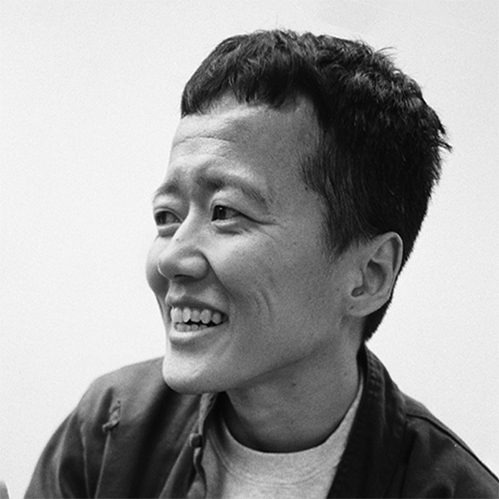
Photo by Charles Klein

Photo by Charles Klein
Tenzin Mingyur Paldron has a PhD in rhetoric from UC Berkeley and wrote the dissertation Tibet, China, and the United States: Self-immolation and the limits of understanding (2021). The artist later collaborated with Soojin Chang on the film Virtue and the Remaking of Suffering, which features Paldron’s analysis and commentary on a historic letter sent by peace activist Thich Nhat Hanh to civil rights leader Dr. Martin Luther King Jr. in 1965.
Through art and dialogue, Tenzin Mingyur Paldron has worked to elevate LGBTQIA+ perspectives and address issues of sexual violence in the Tibetan diaspora. The artist is developing the Tibet Learning Series which is preceded by the online archive Tibet x Decolonial Atlas and his talk series Truth at the Margins on racism and disinformation in the media regarding Tibetans. They are also writing a research memoir entitled Transgender Road Diaries: A Tibetan Adventure.
Tenzin Mingyur Paldron’s new work Power, Masculinity, and Mindfulness comprises four films and videos that source exchanges between the artist and his father to engage wider world issues and Tibetan realities. Through them the artist invites viewers to contemplate their own nuanced perspectives, fallibilities, and resources.
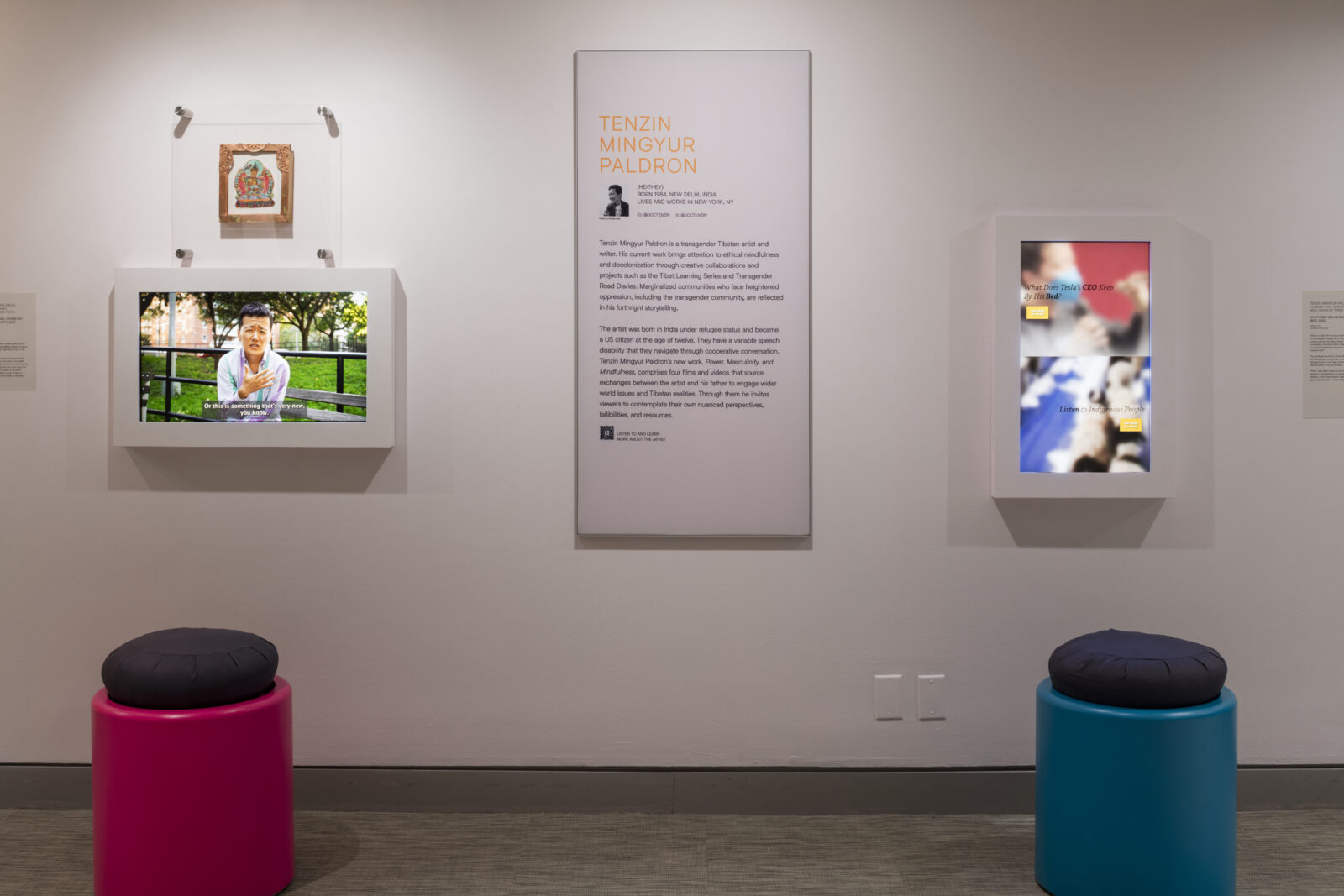
Installation view of Reimagine: Himalayan Art Now presented by the Rubin Museum of Art,
March 15 – October 6, 2024. Photo by David de Armas, courtesy of the Rubin Museum of Art

Tenzin Mingyur Paldron; filmed by Gina George; menu design by Tenzin Tsepel; What Does Tesla’s CEO Keep By His Bed?; 2023; video; 2 min.; courtesy of the artist
While on a walk with his dog contemplating the meaning of a photograph tweeted by Elon Musk, the artist received a phone call from his father. Toward the end of their brief conversation, the artist’s father unexpectedly interjected, “If you just do something to prove you are a genius, it will bring a painful result.”
This exchange returned to Tenzin Mingyur Paldron’s mind the following year during Asian American and Pacific Islander Heritage Month. In this video, the artist holds a family heirloom given to him by his father.
This object from the Rubin Museum’s collection is presented in the Reimagine exhibition in dialogue with What Does Tesla’s CEO Keep By His Bed?, inviting new ways of encountering traditional Himalayan art.

Vajra scepter; Himalayan; 17th - 18th century; Metal; Rubin Museum of Himalayan Art, Gift of Ralph Redford; C2008.23
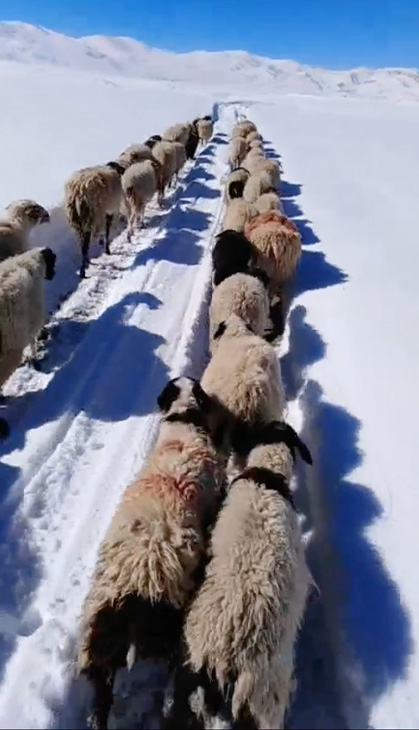
Tenzin Mingyur Paldron; menu design by Tenzin Tsepel; Tibetan language design by Choedon Thinley; Listen to Indigenous People; 2023; video; 12 min.; courtesy of the artist
This video in various segments details Tenzin Mingyur Paldron’s views on social issues that have garnered attention on national and global scales. The artist named this work after a social media post by his father that read, “Listen to Indigenous people about their culture.” “My father’s words were in response to a viral 2023 news story that dehumanized Tibetans and their human rights leader by mischaracterizing and condemning a Tibetan cultural expression without pausing to think,” the artist says.
“In Listen to Indigenous People I combine my lenses as a Tibetan American scholar and CSA [child sexual abuse] survivor to discern the injury caused by this story, an injury I regard as a microcosm for what our world is experiencing today. I center the experiences of the child, the mother, the Dalai Lama, and the Indigenous people at the heart of this story and consider the media’s silence on their own mistakes and motives, a silence that damages the prospects of genuine peace and mindfulness in the world. By adding lenses from struggles faced by the transgender and Palestinian communities I seek to help people recognize when their fear or bias lead them to lose self-awareness and harm others, as such attitudes can benefit political agendas and profit margins but are unlikely to help humanity.” —Tenzin Mingyur Paldron
This object from the Rubin Museum’s collection is presented in the Reimagine exhibition in dialogue with Listen to Indigenous People, inviting new ways of encountering traditional Himalayan art.
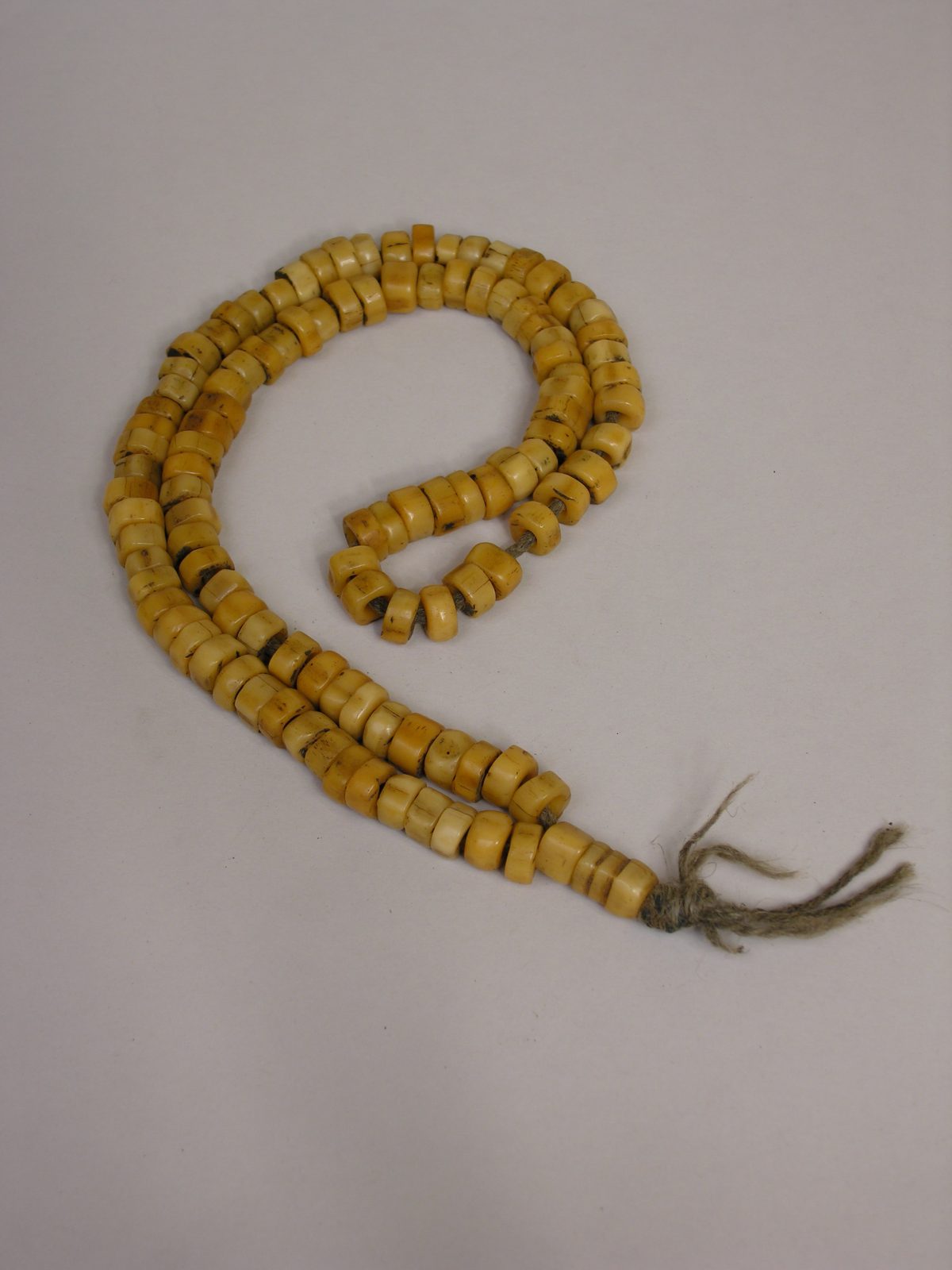
Tibetan Sheep Bone Prayer Beads; Tibet; date unknown; Sheep bone and thread; Rubin Museum of Himalayan Art, Gift of Anne Breckenridge Dorsey; C2012.6.28
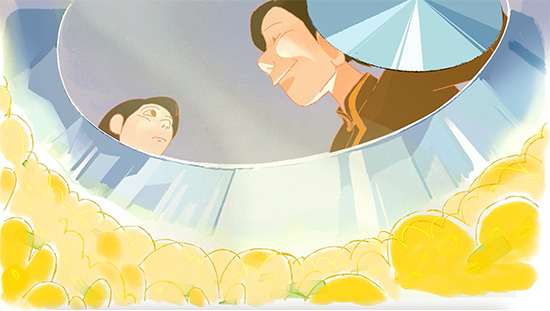
Tenzin Mingyur Paldron; animation by Tenzin Lhamo; menu design by Tenzin Tsepel; some men go to Mars, others pay attention to the Earth; 2023; video; 3 min.; courtesy of the artist
In this film, Tenzin Mingyur Paldron recalls a story that his father told him about how his grandfather listened to nature. This story was first published as “Tashi Bhuti’s Son” in the artist’s dissertation.
“There is a certain CEO who is perceived to be powerful because he’s the richest man on the planet. That wealth derives partly from his exploitation of this Earth. And now he wants to colonize another planet. But how much good can someone do on Mars if they don’t listen to the planet they’re already on? My grandfather’s power to listen to the Earth is just as astounding as the ability to visit Mars.” —Tenzin Mingyur Paldron
This object from the Rubin Museum’s collection is presented in the Reimagine exhibition in dialogue with some men go to Mars, others pay attention to the Earth, inviting new ways of encountering traditional Himalayan art.

Kalachakra Cosmology Illustration; Tibet; 16th century; Pigments on cloth; Rubin Museum of Himalayan Art; C2009.9
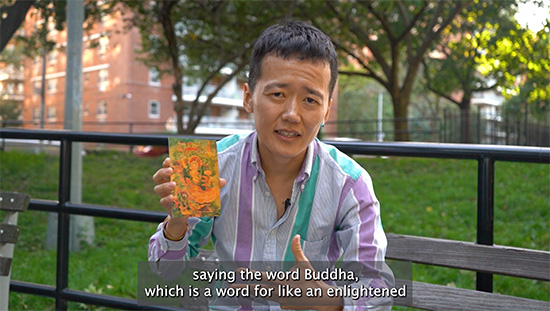
Tenzin Mingyur Paldron; filmed by Tsejin Khando; menu design by Tenzin Tsepel; The Gentle Buddha Who Cuts Through Ignorance and Duality (Coming Out Trans to My Father); 2023; video; 12 min.; courtesy of the artist
Tenzin Mingyur Paldron’s video highlights his experience of coming out as transgender to their father, who replied by recognizing the gender fluidity of enlightened figures in Tibetan Buddhist art. “When I told my father I was trans, he spoke to me of Jampel Yang [Sanskrit: Manjushri], a buddha I knew from my childhood,” the artist says. “Years later, a queer Tibetan artist shared Manjughoksha with me. Here I speak about both these exchanges, from a park bench in Queens near Little Tibet.”

Ngawang Tenzin; Manjughoksha; 2022; bead and thread, framed in wood; courtesy of the artist
Manjughoksha is another name for Manjushri, a bodhisattva in Tibetan Buddhism. Manjushri, or “Soft Voice,” is typically depicted as yellow or golden in color, riding a lion, and with his hand in the teaching mudra.
Tenzin Mingyur Paldron speaks about artist Ngawang Tenzin sharing this image with him in the video The Gentle Buddha Who Cuts Through Ignorance and Duality (Coming Out Trans to My Father).
This object is presented in the Reimagine exhibition in dialogue with The Gentle Buddha Who Cuts Through Ignorance and Duality (Coming Out Trans to My Father).
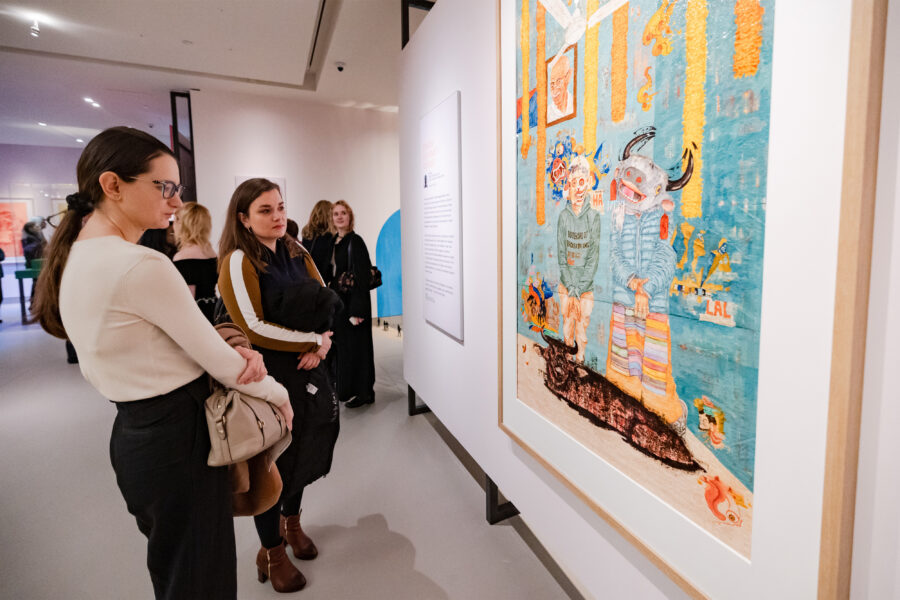
Wrightwood 659
Chicago, IL

Rubin Museum
150 W. 17th St., NYC

Get the latest news and stories from the Rubin, plus occasional information on how to support our work.